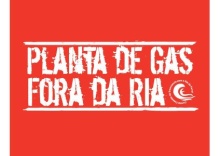NO al CIRCUITO ABIERTO DE VAPORIZACION
Artículo publicado en INDEPENDENT WEEKLY
Environmentalists and oil companies square off over the rapid development of Liquefied Natural Gas terminals.
By Nathan Stubbs | 3/2/2005
TRADUCCION:Grupos de pescadores locales y medioambientalistas están luchando para alcanzar una fuerte posición en la carrera contra la industria de la energía que pretende construir nuevas terminales de GNL en la costa de Lusiana.
Cuatro instalaciones de GNL existen en EE.UU. incluyendo la de Lake Charles. Todas se han autorizado para trabajar con sistema de “Circuito Cerrado” el cual de forma continua recicla, en un sistema cerrado, el agua confinada en una piscina. Pero la nueva terminal de Shell se ha autorizado con sistema “Circuito Abierto de vaporización” y esa decisión está provocando la cólera de más de una docena de organizaciones cívicas y de negocios desde la Liga de Mujeres Votantes de San Tammany a la Asociación de Pescadores Unidos.
Los terminales que usan ORV “chupan” hasta 200 millones de galones de agua de mar al día (757 millones de litros) -junto con sus habitantes vivos- a través de un tipo de radiador y circula por unos paneles que tienen una temperatura de menos 260 ºF ( menos 162 ºC) . Luego el terminal descarga el agua al mar, ahora clorinada y sobre 20 ºF menos de temperatura (10 ºC).
Susan Mopper, directora del Centro de Lafayette para la Teconología de Medio ambiente y Ecología de la Universidad de Lusiana, dijo que la terminal de GNL tendrá un impacto importante en las poblaciones de pescado y crustáceos del Golfo. No poseería solamente una amenaza para los huevos y las delicadas larvas que representan la siguiente generación de pesca, si no que también lo sería para el diminuto plancton que es la base de la cadena alimentaria del Golfo. Mopper se estremece cuando considera el efecto de todos los terminales que utilizarían el sistema de “Circuito Abierto”.
“Van a esterilizar todo y eso será la peor cosa que pueda suceder en el Golfo” dice ella. “Esto es similar al concepto de zona muerta. Podría crear su propia zona muerta miniatura”
TEXTO ORIGINALLocal fisheries and environmental groups are struggling to catch up in the energy industry”™s race to construct a slew of new terminals off Louisiana”™s coast for importing Liquefied Natural Gas.
Four LNG facilities exist in the United States, including Trunkline LNG in Lake Charles. All of those sites are permitted as “closed loop” systems, which continuously recycle an enclosed pool of water. But Shell”™s new terminal is permitted as an “open rack vaporization” or open loop system “” and that decision is drawing the wrath of more than a dozen civic and business organizations from the League of Women Voters of St. Tammany to the United Commercial Fisherman”™s Association.
Terminals using ORV suck in up to 200 million gallons of sea water a day (along with its living inhabitants) through a radiator-like structure and run it over panels with a temperature of minus 260 degrees Fahrenheit. The terminal then discharges the water “” now chlorinated and about 20 degrees cooler “” back into the sea.
Susan Mopper, director of UL Lafayette Center for Ecology and Environmental Technology, says even one such LNG terminal could have a noticeable impact on the Gulf”™s fish and crustacean populations. Not only would the terminal pose a threat to the eggs and delicately drifting larvae that represent the area”™s next generation of fish, but it would also take in the tiny plankton that forms the base of the Gulf”™s food chain. Mopper shudders when she considers the effect of a whole fleet of open water LNG terminals.
“It”™s just going to sterilize everything, and that”™s the worst thing that can happen in the Gulf,” she says. “It”™s similar in concept to the dead zone. It could create its own miniature dead zone.”
Artículo completo en : http://www.theind.com/news2.asp?CID=1405114935
